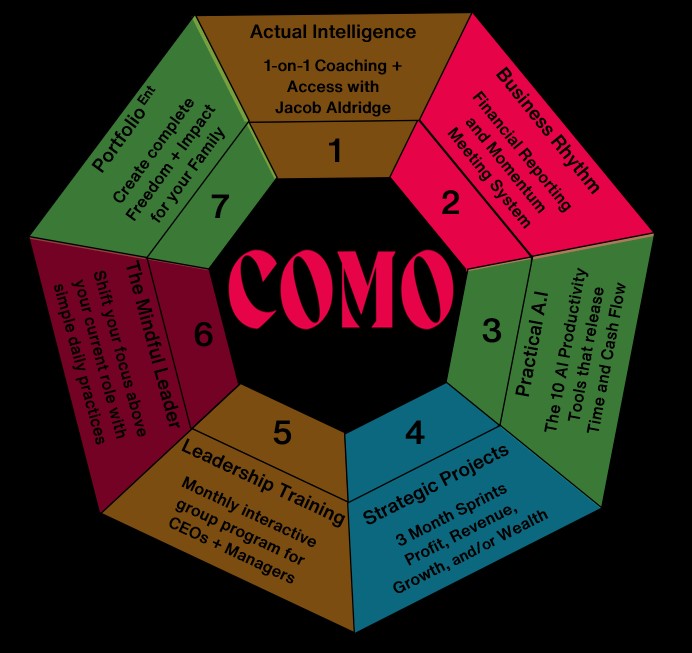The Rhythm Method: Creating Time + Cash for Business Owners
Do business challenges differ in different countries? What can we learn from how business is done elsewhere, to improve our business income / wealth / lifestyle outcomes?
In my experience having coached privately-owned companies in 12 countries (and spoken at conferences to more), for those 12-96 employee businesses I specialise in the challenges are mostly the same:
- forging relationships,
- using frameworks to scale profitably, and
- dealing with the emotional human experience of private enterprise.
Cultural nuances are trickier.
And there’s one cultural norm in western businesses that I believe is preventing many business owner dreams. When you make these simple changes, you build a stronger foundation for your success.
It’s all to do with how we perceive time differently.
Read on…
Did you see me interviewed on the Livelong Podcast? Click here.
Want more Revenue? Watch this week’s video – a Blackboard Fridays standout
1. Time is an Illusion. Lunchtime Doubly So.
The critical blindspot in your cultural norms is that to you they seem … normal.
Jargon is an obvious example, where language becomes so normalised it’s hard to realise words don’t translate outside your business or industry. (Yes, there’s an xkcd for this.)
How you perceive Time is one of these cultural blindspots, which may be apparent to you if you’ve ever holidayed in Bali or Fiji and experienced “Island Time” first hand.
So in explaining Segment 2 of the Como AI business approach (“Business Rhythm”), let me:
- Bust the myth that time is the same worldwide,
- Explain how Work-Life Balance thwarts success, and
- Detail how a non-western approach to time will very much help improve your western business

Time Flies Like an Arrow (Fruit Flies Like a Banana)
In Western Cultures, which is most of my Australia / UK / US readers, time is Linear.
If you force yourself to think about time, does it make the most sense that time flows from one moment to the next, this morning into this afternoon, today into tomorrow, in a linear fashion?
A business that runs on Linear time will often be motivated by the Vision – Strategy – Goals approach. You will have a focus on productivity, since achieving more in this moment allows all subsequent moments to be better.
Failure to achieve today’s tasks can lead to a feeling of inadequacy, or worse, since it will seem that failure today is a setback to your long-term goals.
Sound familiar?
Are you surprised to learn that this is not the only way of experiencing time?
Multi-Active Time
In the second of our cultural perspectives, Time is something that flows past us like a river, into which we can dip in and out. When we are completing a task, the time required and its relationship to others tasks isn’t relevant.
Does that confuse or blow your Linear mind?
These cultures tend to be more polychronic, completing multiple tasks simultaneously (though not necessarily more efficiently).
And among the most important tasks are social relationships – so if a meeting includes social conversations, or a quick errand leads to social interaction, it doesn’t matter if that task takes a lot longer. After all, what is “longer” when time is just something that flows past?
Coming from a Linear culture, the pace of a Mediterranean environment, or the Island Time on Fiji can feel both liberating … and unbelievable frustrating. “I just need to make this decision before I can progress to my next piece of work!”

Cyclical Time
Which brings me to my favourite view, that time is neither linear nor separate – merely an ever-repeating cycle.
There is always enough time. (One of Como’s Core Values).
Time can never be wasted, since it repeats, and we achieve the most from our time by respecting the rhythm and the cycles.
Despite our Italian branding, this Cyclical Rhythm is what Como wants to bring to your business.
Forget Work Life Balance, Forever
The whole concept of Work-Life Balance is Linear.
You have to do the “correct” amount of Work now, and then take the “correct” amount of Personal time, and continually be mindful to keep the Balance alive.
It’s inauthentic to the human experience. And it’s terrible advice in private enterprise where the freedom we seek is to do as much work as we want, when we want, and then also enjoy as much of life as we want, when we want.
Much clearer to think of Work Life Rhythm.
And that’s where implementing Cyclical rhythms into your business is essential.

Sometimes in business, you have an urgent “burning platform” risk or opportunity.
For most business owners I meet, however, the challenge is lacking the courage or confidence to take your next steps. Whether you’ve lost your mojo, or just some of the thinking time and spare cash flow that energises you, the Como business coaching solution is simple.
Focus on quickly and smoothly implementing a new rhythm (along with some of the business + AI tools from Segment 3, next week).
New rhythms, new energy, new perspectives – and a different experience when you go to work each day.
If you’re super keen to do that yourself, read on. Or skip to this week’s Blackboard Friday’s episode here.
What are some Key Elements of this Business Rhythm?
I’m fond of observing that the only two timeframes that matter in business are 20 years and 90 days. That’s 20 years – your ultimate motivation – and 90 days – your immediate actions.
To support that rhythm, Como adds some other milestones. But there’s a WARNING at the end.
The 7 Elements of Business Rhythm
- A Documented Vision – Commercial, Cultural, Personal
- Annual Strategy Day
- Documented Strategic Capacity Plan
- Quarterly Board Meetings
- A Size-appropriate Momentum Meeting Schedule
- Weekly Financial Scorecard
- Priorities Dashboard
See the words “Size Appropriate”. This is the biggest mistake many business owners make, because they “copy the wrong homework” and try to run their business like another, successful company … which is different, and therefore has different needs.
If you want to learn more, click to read my Detailed Strategy Guides for private companies at 3 different phases.



2 – 12 Employees 12-35 Employees 35-120 Employees
Check Yourself, Before You Wreck Yourself
Don’t just gloss over that Business Rhythm list. Ask yourself the questions:
- Do I have a documented Vision and Capacity Plan?
- Did I run a Strategy Day, for my partners or my team, this year?
- Am I having consistent meetings – for Strategy, Sales, Marketing, Finance, and more?
- Do I have easy access to the key financial data in my business?
- Is my team clear about the current Priorities I am designing or executing?
If you answer no to a few of these … or, worse still, “not sure”, then can I suggest a course of action?
Click here and let’s book a chat. Or just pick up the telephone and call me.
If you think you’re too busy to talk about a better path, please remember – there is always enough time.
2. Jacob Speaks! – The Livelong Podcast
Welcome to the Online Prosperity Show, where we dive deep into the world of business, entrepreneurship, and success strategies.
In this episode, your host Prosper Taruvinga engages in a captivating conversation with the internationally renowned business advisor and bestselling author, Jacob Aldridge.
Don’t miss out on this enlightening conversation! Subscribe to the Online Prosperity Show here, or click here to watch the enlightenment unfold on YouTube.
3. Blackboard Fridays Episode #23 – A Formula for More Revenue
Sick of there always being too much month at the end of the money? Scared about the Rhythm Method above?
This quick calculation can help. And it comes from a coaching session I ran in a professional services firm, where the State Manager was unbelievably frustrated at the KPIs being set during a national revenue dip.
He was one of the few employees achieving his revenue goals – and this simple framework:
- Helped him understand the context of his business partners, removing his frustration, and
- Gave him a tool to further help the rest of the business improve their commercial outcomes.
Need more Cash? This will show you how.
Click here to watch this week’s video.
See you next Friday,
With love,
Jacob Aldridge
International Business Advisor
Visit my new website
Connect on LinkedIn





